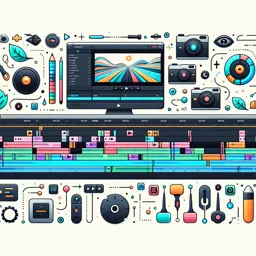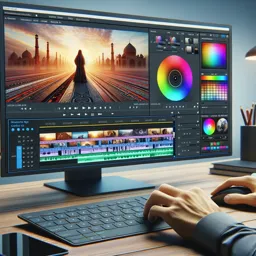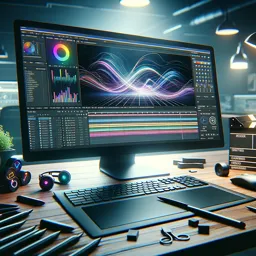Sound design is an essential aspect of video editing that significantly enhances the overall impact and quality of a video. It involves the creation, manipulation, and integration of audio elements, including dialogue, sound effects, and music, to support and elevate the visual storytelling. Effective sound design can transform a good video into a great one by creating an immersive and engaging experience for the audience. Here’s an in-depth look at the role of sound design in video editing.
1. Dialogue and Voiceovers
Importance: Dialogue is crucial for conveying the narrative and providing essential information. Voiceovers can offer additional context or guide the audience through the story.
Techniques:
- Clear Recording: Ensure high-quality recording of dialogue and voiceovers to avoid background noise and distortion.
- Synchronization: Align the audio with the video to maintain lip-sync and timing.
- Editing: Cut out unnecessary pauses, filler words, and mistakes to keep the dialogue concise and engaging.
2. Sound Effects (SFX)
Importance: Sound effects add realism, emphasize actions, and enhance the atmosphere of a video. They help the audience connect with the on-screen events more deeply.
Types of Sound Effects:
- Diegetic Sounds: Sounds that originate from the on-screen action, such as footsteps, door creaks, and ambient noises.
- Non-Diegetic Sounds: Sounds that are not part of the on-screen action but are added for dramatic effect, like swooshes or impacts.
Techniques:
- Layering: Combine multiple sound effects to create a rich and realistic audio environment.
- Timing: Synchronize sound effects with the corresponding visual actions to enhance believability.
- Volume Control: Adjust the volume levels of sound effects to ensure they blend seamlessly with other audio elements.
3. Music
Importance: Music sets the tone, mood, and emotional backdrop of a video. It can evoke specific feelings and enhance the storytelling.
Techniques:
- Selection: Choose music that complements the theme and pace of the video.
- Editing: Cut and arrange music tracks to fit the video’s structure and timing.
- Mixing: Balance the music with dialogue and sound effects to avoid overpowering other audio elements.
4. Ambient Sound
Importance: Ambient sound, or background noise, provides context and realism to a scene. It helps establish the setting and atmosphere.
Techniques:
- Recording: Capture ambient sounds on location to match the environment accurately.
- Looping: Create seamless loops of ambient sound to maintain continuity.
- Subtlety: Keep ambient sounds at a low volume to avoid distracting from the main audio elements.
5. Foley Art
Importance: Foley is the art of creating and recording everyday sound effects that are added to the video in post-production. It enhances the auditory experience by making the sounds more authentic.
Techniques:
- Recreation: Use various props and materials to recreate sounds, such as footsteps, clothing rustles, and object interactions.
- Timing: Perform Foley in sync with the video to ensure precise timing.
- Layering: Combine Foley sounds with other audio elements for a fuller soundscape.
6. Mixing and Mastering
Importance: Mixing and mastering ensure that all audio elements blend harmoniously, maintaining consistent volume levels and clarity.
Techniques:
- Equalization (EQ): Adjust the frequencies of audio tracks to improve clarity and balance.
- Compression: Control the dynamic range of audio to prevent volume spikes and ensure a smooth listening experience.
- Panning: Distribute sounds across the stereo field to create a sense of space and direction.
7. Software Tools
Popular Software:
- Adobe Audition: Professional audio editing and mixing software.
- Avid Pro Tools: Industry-standard for audio recording and mixing.
- Logic Pro X: Comprehensive music production and sound design software.
- Audacity: Free, open-source audio editing software.
Conclusion
Sound design plays a crucial role in video editing, enhancing the overall quality and impact of the final product. By carefully crafting and integrating dialogue, sound effects, music, ambient sounds, and Foley, video editors can create immersive and engaging audio experiences that elevate the visual storytelling. Mastering sound design techniques and tools is essential for any aspiring video editor looking to produce high-quality, professional videos.
































